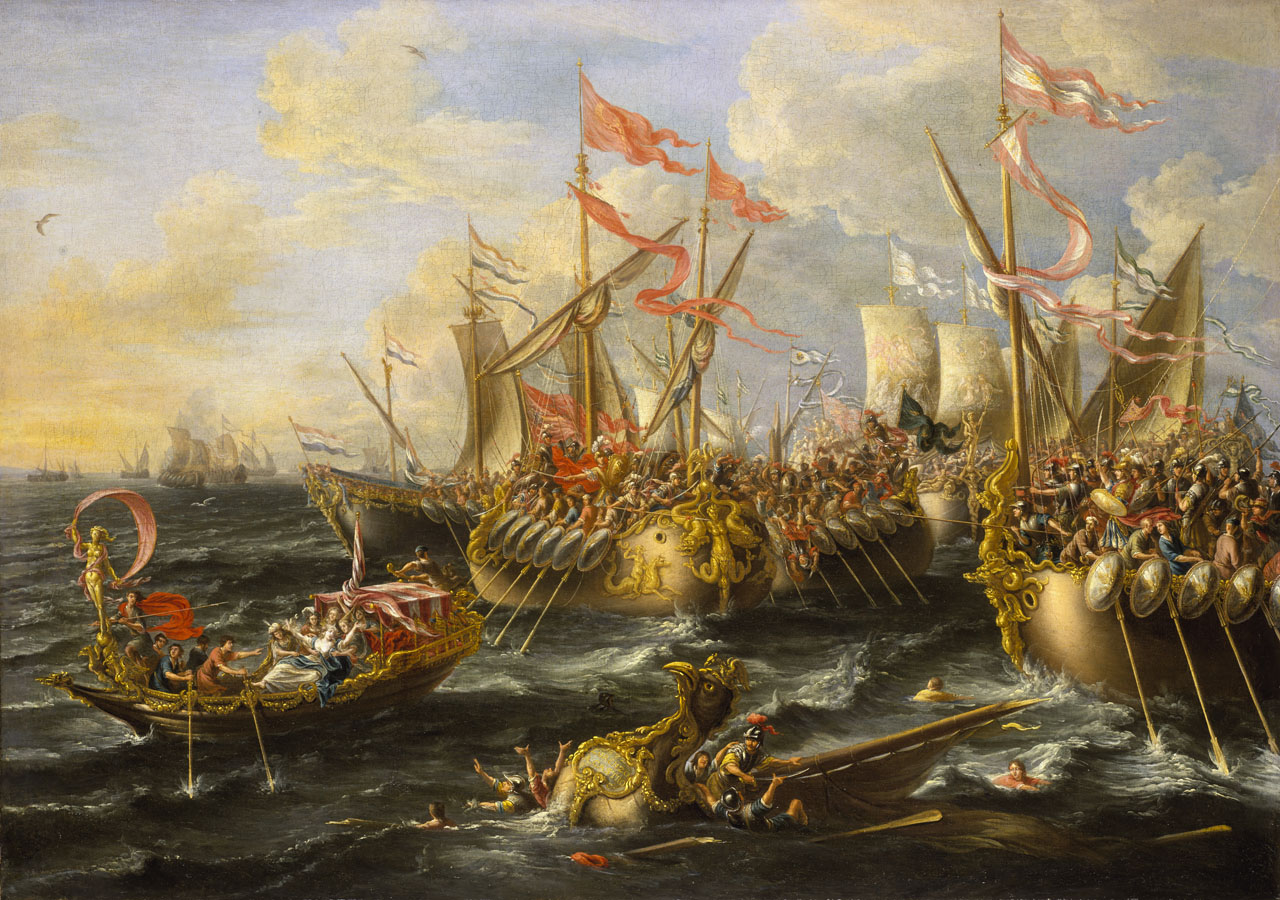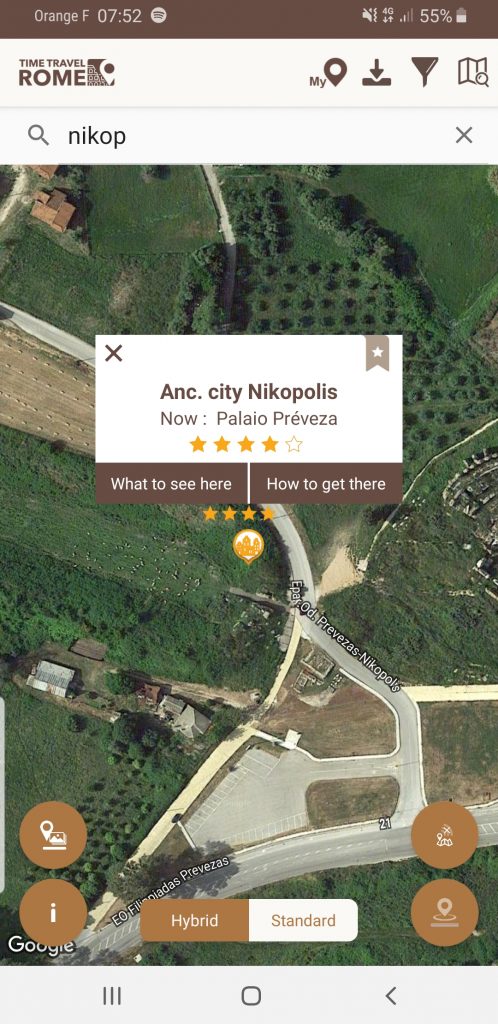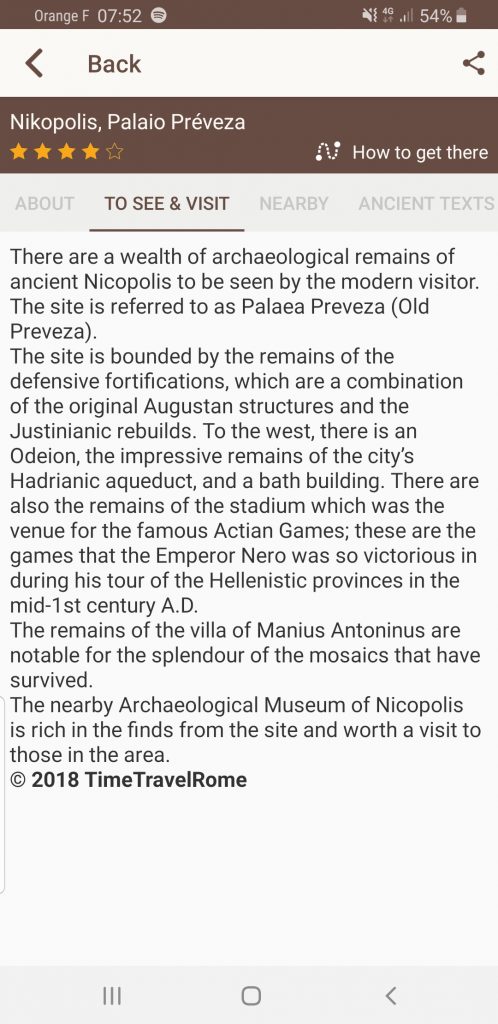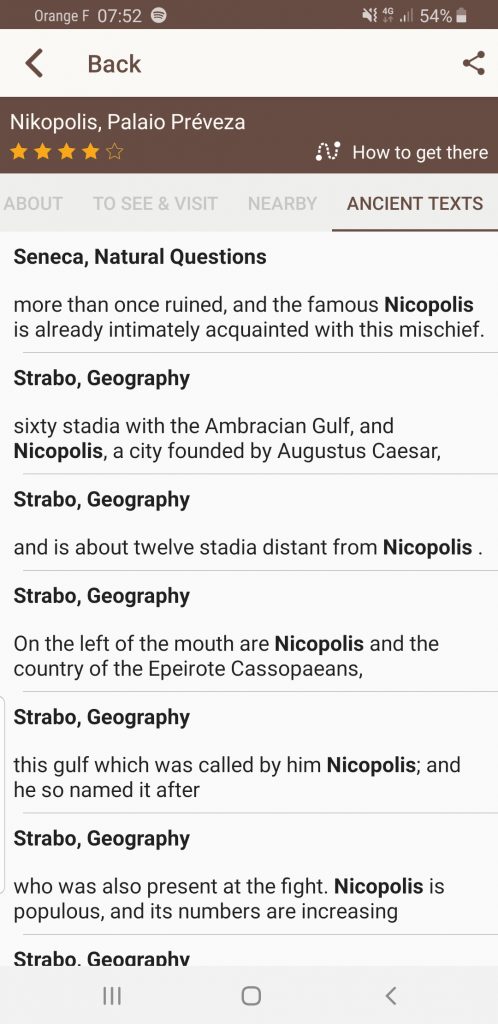Having proven his naval prowess against Sextus Pompey as well as his unwavering loyalty, Agrippa was the natural choice for Octavian when the constant tension with Antony led to another nautical war. Shortly after the Battles of Mylae and Naulochus, Octavian had successfully ousted the third triumvir, Lepidus. As a result, he held sole control of the western half of Rome with Antony running the eastern half. It was inevitable that the two would clash for ultimate power. In the war that followed, Agrippa once again played a decisive role as Octavian’s top commander in the famous Battle of Actium.
Trapped in Greece
Antony had been enjoying his rule and his lavish lifestyle from the ancient city of Alexandria in Egypt. He had also been enjoying the attentions of Cleopatra, Egypt’s queen, despite his previous marriage to Octavian’s sister. Octavian used Antony’s dalliances to great advantage back in Rome, vilifying Antony for his unfaithfulness. It helped his cause even further that Octavia remained the picture of a noble Roman wife, devotedly caring for her and Antony’s children even as Antony made plans to divorce her and marry his Egyptian queen. Antony’s devotion to Cleopatra proved much of his undoing. Octavian was able to convince most of the Senate that Antony intended to undermine the power of Rome and hand control to foreigners in the East.
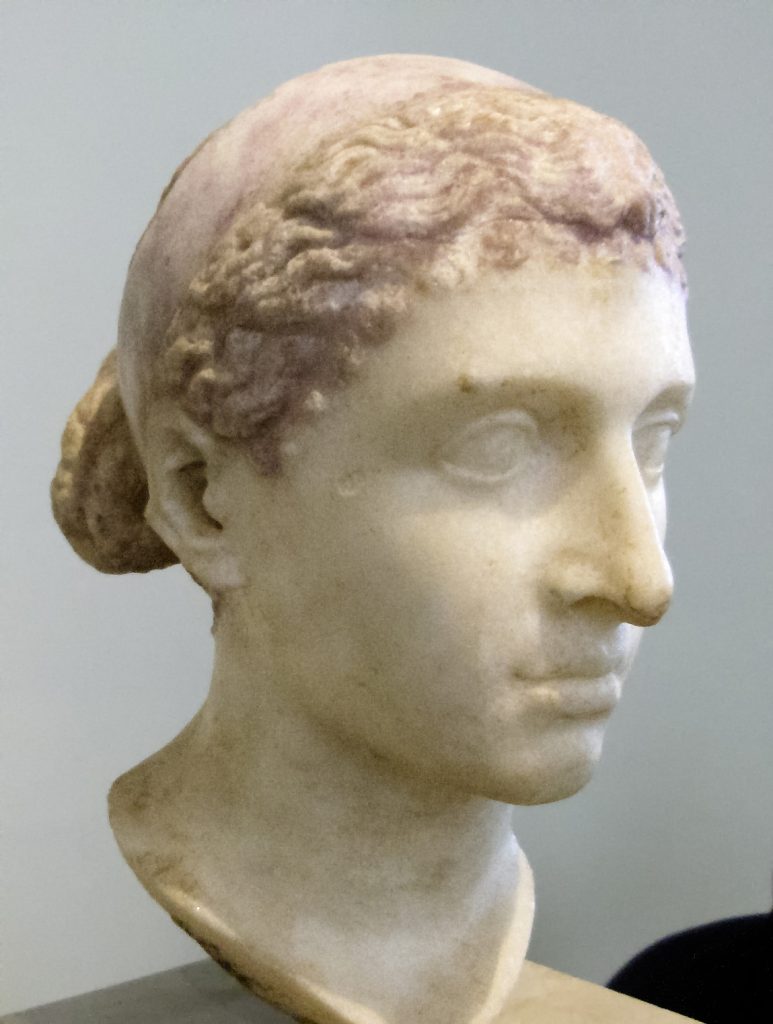
As conflict became inevitable, Antony and Cleopatra moved their forces to Greece, positioning the main strength of their navy in the port of Actium. Moving quickly, Octavian moved his forces by ship across the Adriatic Sea to attack Antony in Greece. Landing much of the army north of Actium, Octavian led his soldiers to cut off Antony and Cleopatra’s escape route by land. Meanwhile, Agrippa, commanding the navy, blockaded the port and cut off the supply lines. As the siege continued and Antony’s position grew worse, his soldiers deserted him in large numbers to Octavian. Eventually Cleopatra, who commanded her own ships in Antony’s fleet, convinced Antony and his generals that they should abandon the fortified positions in Greece and escape by boat back to Egypt. From there, they could launch a much stronger defense.
Escape from Actium
Octavian learned of their plan from deserters of Antony’s camp. As a result, he believed that he should allow Antony and Cleopatra to slip past but prepare to attack them from behind. This way, when he proved to their men that they intended to flee, he hoped to win over the soldiers to his cause with little fighting and bloodshed. However, he capitulated to the advice of Agrippa, who knew the ships better and feared that if Antony and Cleopatra came past in their lightest ships, the slower Roman vessels would not be able to catch them. As a result, Octavian prepared his vessels for a full confrontation. Soon after, Antony and Cleopatra led their fleet out of the port at Actium. However, they made no attempt to engage until Octavian and Agrippa moved to surround them. Forced reluctantly into battle, they advanced to meet their enemies.
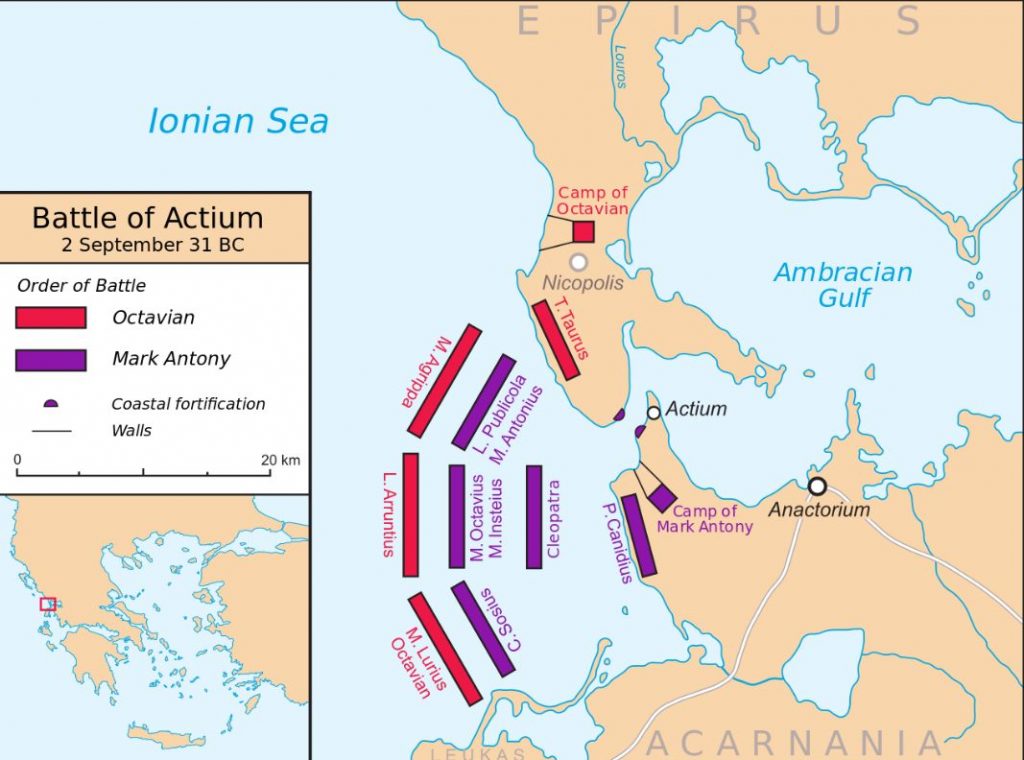
“[Octavian’s] followers, having smaller and swifter ships, would dash forward and ram the enemy, being armoured on all sides to avoid receiving damage. If they sank a vessel, well and good; if not, they would back water before coming to grips, and would either ram the same vessels suddenly again, or would let those go and turn their attention to others…The enemy, on the other hand, tried to hit the approaching ships with dense showers of stones and arrows, and to cast iron grapnels upon their assailants. And in case they could reach them they got the better of it, but if they missed, their own boats would be pierced and would sink, or else in their endeavour to avoid this calamity they would waste time and lay themselves more open to attack by other ships.”
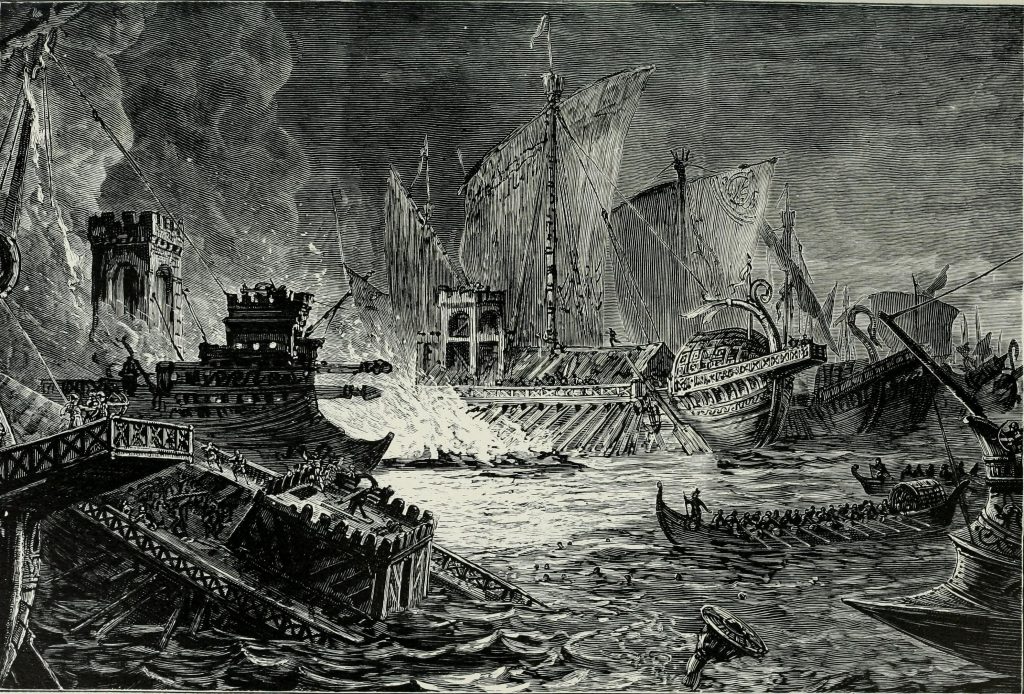
Flight and Defeat
In this way, the battle continued indecisive for a long while. Eventually, a sudden decision by Cleopatra began to turn the tide. Hoping for an escape, and with the wind turning favorably for them to sail toward Egypt, she unexpectedly turned her flagship from the battle and signaled for her followers to do the same. Thinking that they were running because they thought the battle lost, Antony also turned and fled. His remaining vessels grew confused and disheartened, and made to raise their sails and follow. Yet while they made these preparations, Octavian and Agrippa attacked, and the close quarters fighting turned brutal and bitter. When the battle still remained undecided, Octavian’s forces reluctantly turned to their final resort. Sending flaming arrows and missiles onto the enemy ships, they set them ablaze.
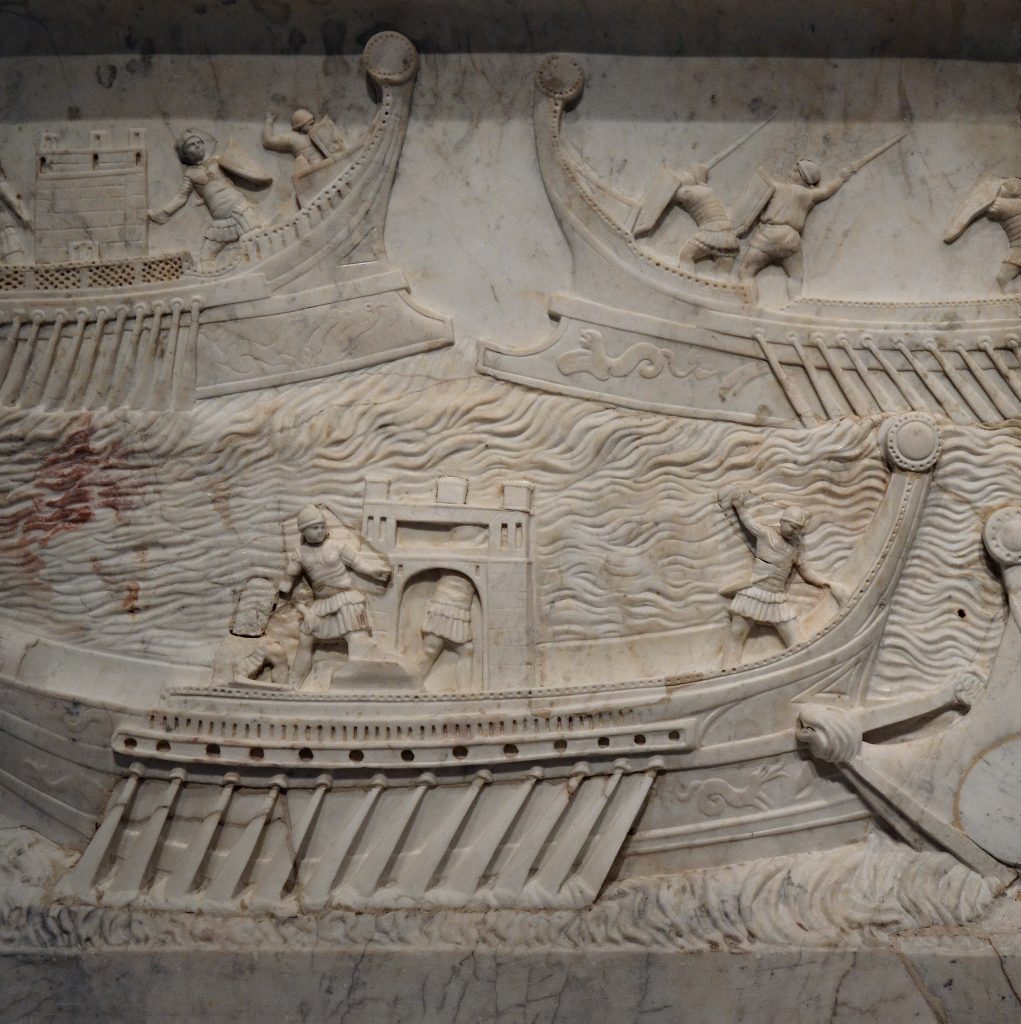
“When the fire spread, the most terrible of fates came upon them. Some, and particularly the sailors, perished by the smoke before the flame so much as approached them, while others were roasted in the midst of it as though in ovens. Others were consumed in their armour when it became heated. There were still others, who, before they should suffer such a death, or when they were half-burned, threw off their armour and were wounded by the shots which came from a distance, or again leaped into the sea and were drowned, or were struck by their opponents and sank. Those alone found a death that was tolerable, considering the sufferings which prevailed, who were killed by their fellows in return for the same service, or else killed themselves, before any such fate could befall them; for they not only had no tortures to endure.”
Founding of Nicopolis
Knowing they would not be able to catch the fleeing Antony and Cleopatra, Octavian and Agrippa made no immediate move to do so. Instead, they first celebrated their victory, establishing a festival in honor of the battle and also founding the city of Nicopolis on the site where Octavian had made his camp. The city prospered as a successful center for commerce and eventually became the capital of the Roman province of Epirus Vetus under Emperor Trajan. Nicopolis took damage from an earthquake in 375 B.C., and then at the hands of maurading Goths, Huns, and Vandals. It was restored by Emperor Justinian in the mid-6th century, but eventually lost its economic pre-eminence to the city of Preveza in the Middle Ages.

What to See Here:
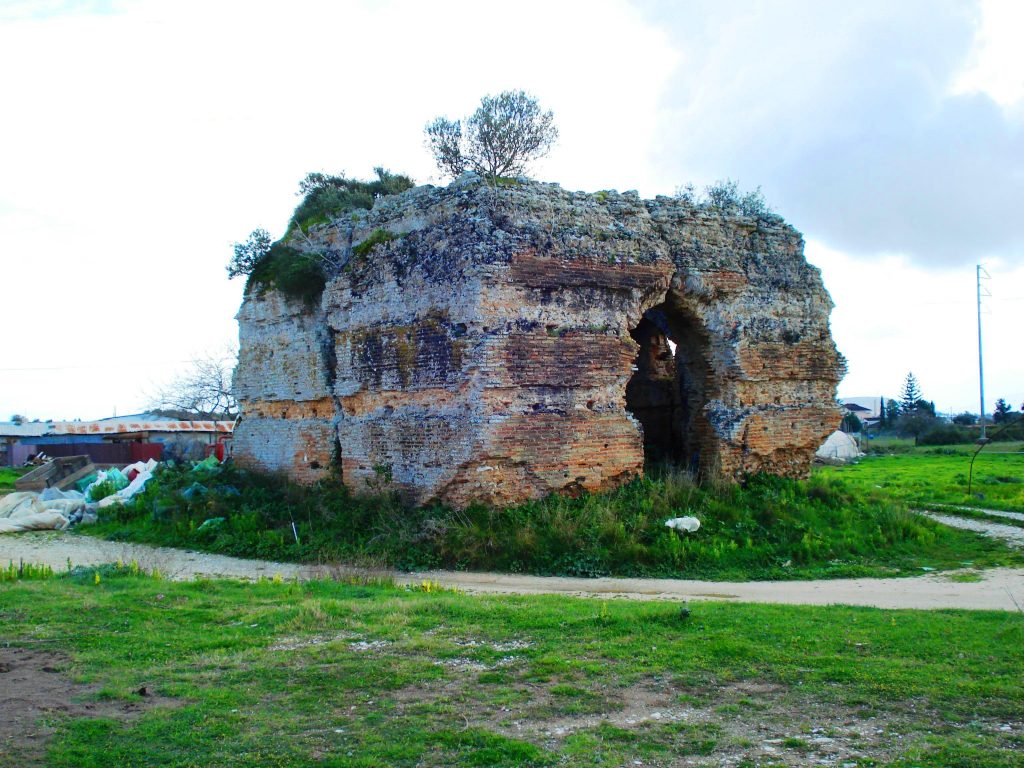
Modern visitors can enjoy a a wealth of archaeological remains of ancient Nicopolis. The site is referred to as Palaea Preveza (Old Preveza). It is bounded by the remains of the defensive fortifications. They are a combination of the original Augustan structures and the Justinianic rebuilds. To the west, there is an Odeion, the impressive remains of the city’s Hadrianic aqueduct, and a bath building. There are also the remains of the stadium which was the venue for the famous Actian Games. These are the games that the Emperor Nero was so victorious in during his tour of the Hellenistic provinces in the mid-1st century A.D. The remains of the villa of Manius Antoninus are notable for the splendour of the mosaics that have survived. The nearby Archaeological Museum of Nicopolis is rich in the finds from the site and worth a visit.
Nikopolis on Timetravelrome App:
Sources: Suetonius, Life of Augustus; Cassius Dio, Roman History.
Author: Written for Timetravelrome by Marian Vermeulen
Header image: Battle of Actium, a painting by Lorenzo A. Castro, now in Royal Museums Greenwich. The image is in the public domain.
